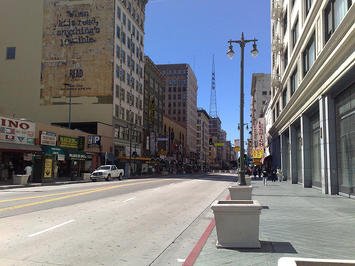
For much of the past century, Southern California has been driven by ever increasing population growth. That area has now ended as the region’s demographics stagnate, a trend that, according to the latest Census numbers, is, if anything, accelerating. This follows a distinct national trend, notes demographer Wendell Cox, where the largest metropolitan areas are losing domestic migrants and growing far slower than smaller, often less expensive regions.
But even among the nation’s largest metropolitan areas, the Los Angeles-Orange County region’s growth rate last year dropped precipitously — .19 percent — less than one third the average for the country’s 53 largest metro areas. By itself, Los Angeles’ rate was even lower, an insignificant .13 percent. Overall, L.A.-Orange County ranked lower than all but Chicago and Detroit among the top 20 major metropolitan areas.
One reason: growing net out-migration. The Los Angeles-Orange area — which already lost well over 350,000 migrants between 2010 and 2016 — ranked fourth from the bottom of the nation’s 53 largest metro area last year, ahead of only of New York, Chicago, and, surprisingly, San Jose. Despite a somewhat improved economy, L.A.’s area’s rate of outmigration in 2016-2017 was 40 percent over the annual average since 2010 average while the O.C. outmigration rate nearly tripled.
The one area that continues to grow remains the Inland Empire. The population rose 1.26 percent last year, more ten times that our Los Angeles-Orange, and net in-migration rose by more than 80 percent. Although its rate of growth is far slower than a decade ago, the Inland region’s growth reflects a broader national trend that is seeing shifting population away from dense metropolitan areas with dense urban cores and towards generally more suburban regions.
Read the entire piece at The Orange County Register.
Joel Kotkin is executive editor of NewGeography.com. He is the Roger Hobbs Distinguished Fellow in Urban Studies at Chapman University and executive director of the Houston-based Center for Opportunity Urbanism. His newest book is The Human City: Urbanism for the rest of us. He is also author of The New Class Conflict, The City: A Global History, and The Next Hundred Million: America in 2050. He lives in Orange County, CA.
Photo: Al Pavangkanan, via Flickr, using CC License.












